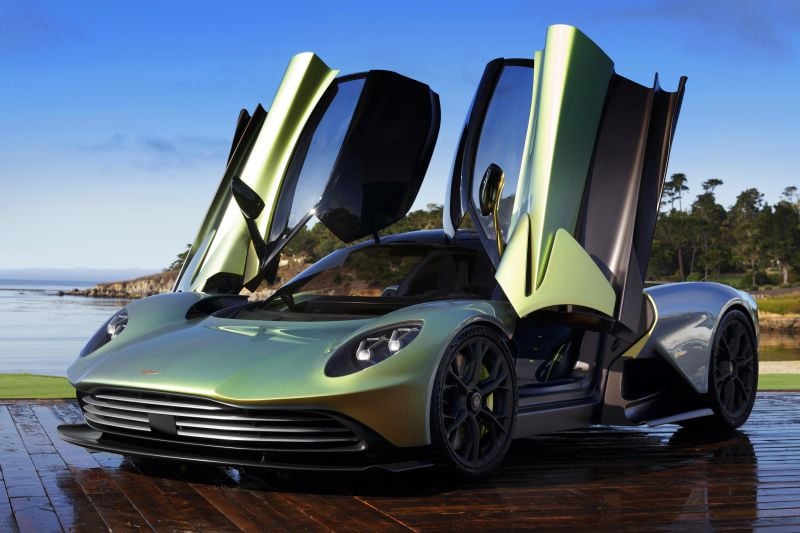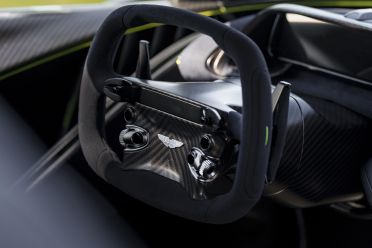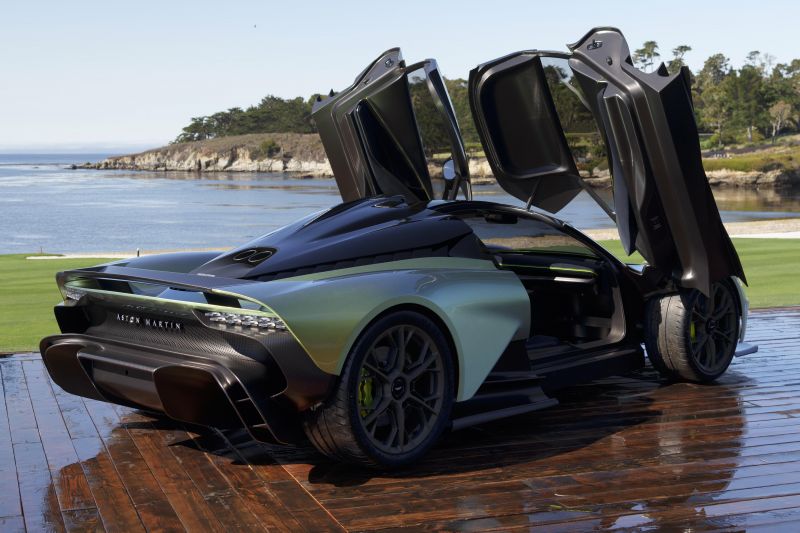Aston Martin has revealed inside its first series-production mid-engine supercar, the Valhalla, for the first time in Australia.
It comes with a caveat though. The car is still a work in progress, with further changes and inclusions likely coming before customer deliveries start in 2024, in both left- and right-hand drive.
Technically, it’s the next iteration of the Valhalla concept we saw in Australia close to a year ago. That car (or pre-production dummy) had its forward-hinged dihedral doors shut tight to hide the fact the interior had not yet been finalised.
Affectionately nicknamed Son of Valkyrie after its Cosworth V12 sibling, the Valhalla is another car which has been designed off the back of Aston Martin’s Formula 1 program.
The dihedral doors open upwards and forwards making it relatively painless to drop into the carbon-fibre bucket seats made comfortable by perfectly contoured Alcantara cushioning, complete with highlights to match its Verdant Green paint.
In fact, almost anything inside Valhalla which isn’t exposed carbon-fibre is wrapped in the same stitched upholstery – that’s the dash, steering wheel, door cards and centre-console.
There’s also a fixed metal pedal set which is truly exquisite, as is the beautifully contoured steering wheel – which looks as though it might have started out as a racing-style yoke, before someone thought otherwise and added the top and bottom sections as a more useful compromise.
Incidentally, the footwells have been raised for a low hip-to-heel seating position like an LMP or F1 car.
In front of the driver is a widescreen display, while a new Aston Martin infotainment system will feature on a central touchscreen (yet to be fitted to this build) which will also incorporate Apple CarPlay and Android Auto.
A floating carbon bridge will likely house a circular drive mode selector as well as the start button. Further back looks to be a small gear selector with storage receptacles behind.
It’s not just the interior that makes its debut in Valhalla. In the past year we’ve seen significant changes to its plug-in hybrid powertrain, which now uses three electric motors (up from two); two for the front axle and the other on the rear.
The hybrid system is there to supplement the rear-mid-mounted 4.0-litre twin-turbo V8 by providing an additional 177kW. Aston Martin says it’s the most advanced, responsive, and best performing V8 ever fitted to one of its cars.
Featuring a flat-plane crankshaft for maximum responsiveness and revving to 7200rpm, the engine develops more than 588kW sent to the rear wheels through a bespoke eight-speed dual-clutch transmission for the first time in an Aston Martin, featuring e-reverse.
The combined system output stands at 744kW of power and 1012Nm of torque. That’s should be enough to send the Valhalla from standing start to 100km/h in 2.5 seconds, and its top speed claim has been ramped up from 330km/h to 350km/h. Track aspirations include a sub-6:30 lap of the Nürburgring Nordschleife.
Valhalla can run in pure EV mode too, but only for a distance of up to 15km at a top speed of just 130km/h. It also has the ability to direct 100 per cent of battery power to the rear wheels.
Despite its significant length and width (those measurements haven’t been officially released), Valhalla maintains a dry-weight target of less than 1550kg.
Instead of big wings and spoilers to create its downforce, the car has a relatively clean surface by relying on active aerodynamic features and carefully controlled underbody airflow through huge tunnels at the rear, and sculptured channels down the side of the car.
Out back you’ll also find a stunning lightweight exhaust, top-mounted with active flaps for adjusting exhaust note levels.











